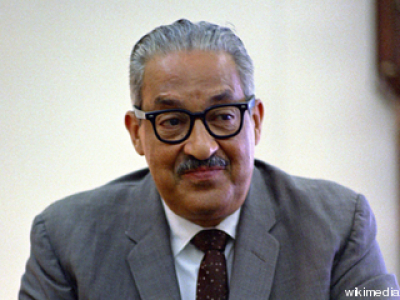5 important things to know about Roe v. Wade
Thurgood Marshall joined the majority

Known as the first African-American to serve as a justice on the U.S. Supreme Court, Thurgood Marshall was part of the seven-justice majority in Roe.
In a 1989 piece for The Washington Post, investigative journalist Bob Woodward reported that Marshall had expressed concern about allowing states too much say in abortion restrictions after the first trimester.
Based on personal papers of the late Justice William O. Douglas that became available to the public at the Library of Congress in 1988, Woodward quoted a memo that Marshall sent to Justice Harry A. Blackmun, author of the majority opinion. The Marshall memo was dated December 1972, the month before the decision was released.
“I am inclined to agree that drawing the line at viability accommodates the interest at stake better than drawing it at the end of the first trimester,” said Marshall to Blackmun.
“Given the difficulties which many women may have in believing that they are pregnant and in deciding to seek an abortion, I fear that the earlier date may not in practice serve the interest of those women, which your opinion does seek to serve.”
Woodward noted that the Marshall memo came at a time when the “clear majority” of the court “felt that abortions in the early months of pregnancy should be permitted but that there was certainly a point in the later months when the fetus, not the mother, deserved constitutional protection.”
“Where to draw the line? By all accounts Blackmun tried hard to find a clear legal argument to justify drawing the line,” Woodward wrote. “He searched through the common law, the precedents, medical books and the positions of various medical organizations — looking for guidance. There were no clear legal or scientific guideposts, so he drafted his opinion more on the basis of logic, medical knowledge, perceived social necessity and the assembled convictions of his colleagues.”




























